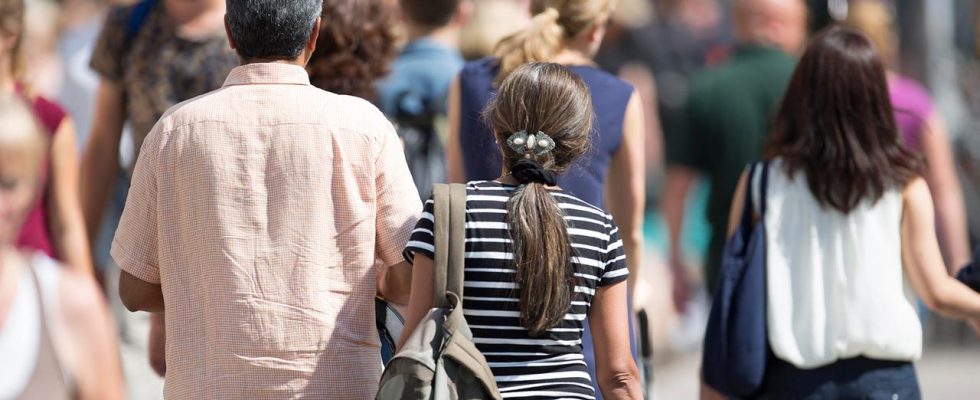A change in migration policy is being discussed in Germany. A study has now examined how integration and participation is going on locally. It shows clear differences.
The study by the Mercator Institute and the Berlin Institute for Population and Development comes at an interesting time: a change in migration policy is currently being discussed in Germany. Upper limits are being discussed again, and there is also talk of integration limits. The signs point to more isolation and control than before. At the same time, Germany is discussing the urgently needed recruitment of skilled workers abroad. Whether a refugee or a skilled worker, in the end both have to be integrated.
How the districts and cities implement this depends on one Integration study under the heading “Everyone should participate. How districts and cities are rethinking integration” examined. This is about a participation-oriented integration policy. A policy that should ultimately improve the situation of everyone involved – that of immigrants as well as that of long-time residents and the economy.
BDI: “Need one “welcoming culture”
The study shows that more and more cities and districts are taking the issue seriously. More serious than in previous years. The authors conclude that immigration and dealing with it constructively can help to overcome demographic challenges. There is the village shop or the pharmacy that has to close because there are not enough customers. There’s the bus that only comes twice a day or the doctor’s office that can’t find any new employees.
“This requires a rethink, because structurally weak regions in particular have so far not been very popular with immigrants,” say the authors. “The regions in particular would have to make an effort to attract new fellow citizens from abroad.”
BDI President Siegfried Russwurm is also considering a rethink tageschau24-Interview if necessary. The manager is concerned about the current debate in Germany. He knows about the labor shortage and what it means for Germany as a business location. “We have to become more attractive as a country, we need a welcoming culture. This starts with the embassies abroad, which have to deal with the immigration of workers differently than before.”
How does participation and integration succeed?
According to the study, of the 400 districts and independent cities in Germany, 221 already have an integration concept. The Lippe district in North Rhine-Westphalia also has one. Those responsible here are concerned with the social participation of all people, not just individual target groups.
This becomes clear with the so-called “housing license for EVERYONE in Lippe.” A project that is dedicated to people who are about to move into their (first) apartment and often have many questions: How do I even find an apartment? What do I have to pay attention to when it comes to the rental agreement and insurance? How do I avoid high additional costs? And how does waste separation work?
The district has organized seminars to answer all of these questions. If necessary, a translator will be added. The local “Municipal Integration Center”, which is headed by Alexandra Steeger, pulls the strings in Lippe. “These integration centers only exist in North Rhine-Westphalia,” she says. “We started with seven employees in 2013 and now we have 26.”
Concepts: The rule in the city, less common in the country
As in the Lippe district, a lot has happened in recent years, especially in rural regions, when it comes to integration and participation – simply because the situation has changed. The study also shows this: “For a long time, districts and communities in remote regions saw no need for integration concepts or there was a lack of political will.”
This has changed with the growing proportion of immigrants to these regions. However, it is still the case that there are significantly more integration concepts in urban regions than in rural regions.
Differences between countries
However, there are not only clear differences between cities and rural areas. The individual federal states also approach the issue very differently. In Mecklenburg-Western Pomerania, Saxony, Saxony-Anhalt and Brandenburg, more than two thirds of the districts and independent cities had developed an integration concept in 2021. In the southern states of Bavaria and Baden-Württemberg as well as in Rhineland-Palatinate and Saarland, however, the proportion was significantly lower. “The state policy in the Free State of Bavaria has not yet created any incentives or even obligations to ensure more integration concepts.”
North Rhine-Westphalia is particularly mentioned in the study. With the introduction of the Participation and Integration Act in 2012, all districts and independent cities developed new concepts or similar documents. These are financially supported by the state.
Because other federal states are less far away, Catherina Hinz from the Berlin Institute calls on district administrators and mayors to also develop and then implement integration concepts. “You should see immigration as an opportunity and understand participation-oriented integration policy as an instrument for shaping coexistence in a diverse society.”

